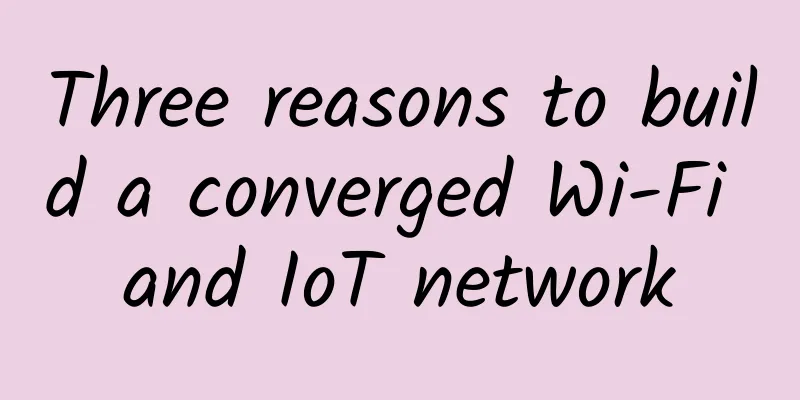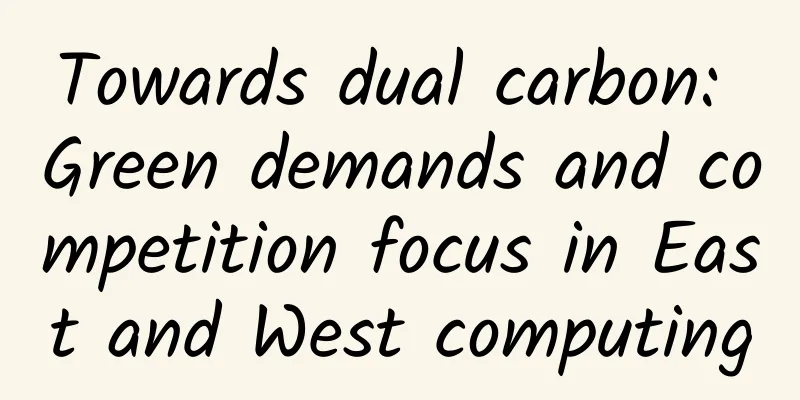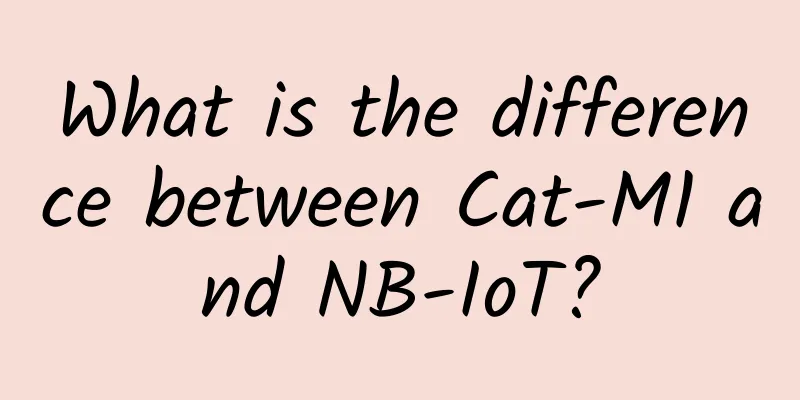TCP

|
This article is reprinted from the WeChat public account "sowhat1412", author SoWhat1412. Please contact the public account sowhat1412 to reprint this article. 3 Transport layer TCP/UDP Continuing from the HTTP above, data goes to the transport layer after passing through the application layer, but before the data reaches the transport layer, it is necessary to obtain the IP address of the server, which involves DNS domain name resolution. 3.1 DNS 3.1.1 DNS Explanation The real address of the host is IP. The problem is that IP address is not easy for people to remember. It's like when you use your mobile phone to call Zhang San, can you tell Zhang San's phone number instantly? You can just make a mapping between the name and the phone number in the mobile phone. When you want to make a call, you can directly find Zhang San in the address book to find the corresponding mobile phone number. Mapping is also required when making network requests, and the domain name server Domain Name System does this. Before talking about DNS in depth, you should first understand the domain name. Every address we enter in the browser address bar is a domain name, such as www.baidu.com. A domain name is composed of . and domain names of different levels. Usually, we omit the root domain name, that is, the . at the end of the domain name, such as www.baidu.com. Since domain names were invented by foreigners, they gradually increase in size from left to right and are separated by .. DNS Hierarchy From top to bottom, domain names are mutually inclusive and nested. The root domain name server is the key and must be well known. Only when it is found can the domain name servers at all levels below be found. Otherwise, domain name resolution is out of the question. Let's look at the DNS resolution process for requesting www.baidu.com:
This is a good way to do DNS, but the problem is that there are billions of PCs in the world. If every computer requests to access the Internet according to the above process, the core DNS resolution system will explode instantly! The solution is to use cache. Many large companies and operators will build their own DNS servers to replace users to request the core DNS system. If they find it, they can cache the query record. If the number of the request is received again, if there is a cached result or the cache has not expired, the original cached result will be returned directly. The well-known Google 8.8.8.8 DNS resolution server is a non-authoritative domain name server built by Google. In addition to non-authoritative domain name servers, we often see browser caches and operating system caches, such as /etc/hosts files. 3.1.2 DNS Example DNS domain name resolution
3.2 TCP 3.2.1 TCP header explanation TCP is a connection-oriented, reliable, byte-stream-based data transmission service that works at the transport layer. Using TCP to transmit data ensures that the network packets received by the receiving end are undamaged, gap-free, non-redundant, and in order. It should be noted that TCP is a one-to-one connection. TCP header + HTTP
The following 7 to 12 are control bits, which are used to indicate the nature of the message segment. 7.URG: Indicates whether the data sent in this message segment contains urgent data. The urgent pointer field is only valid when URG=1. 8. ACK: Indicates whether the previous confirmation number field is valid. The previous confirmation number field is valid only when ACK=1. TCP stipulates that ACK=1 after the connection is established. The TCP segment with the ACK flag is called an acknowledgment segment. 9.PSH: prompts the receiving end to read data from the TCP receive buffer immediately to make room for receiving subsequent data. A value of 1 indicates that the other party should submit the data to the upper layer application immediately. If the application does not read the received data, it will remain in the TCP receive buffer. 10.RST: Receiving a message with RST=1 indicates that a serious error has occurred in the connection with the host and the connection must be released and then re-established. Or it indicates that there is a problem with the data sent to the host last time and the host refuses to respond. The TCP segment with the RST flag is called a reset segment. 11.SYN: used to synchronize sequence numbers when establishing a connection. SYN=1 indicates that this is a message requesting or agreeing to establish a connection. SYN is set to 1 only in the first two handshakes. The TCP message segment with the SYN flag is called a synchronization message segment.
12FIN: Notify the other end that the connection is to be closed, marking whether the data has been sent. If FIN=1, it tells the other end to release the connection. The TCP segment with the FIN mark is called the end segment. 13. Window size: Indicates the amount of data that the other party is allowed to send now. It tells the other party the amount of data that the other party is allowed to send starting from the confirmation number of this message segment. When this value is reached, ACK confirmation is required before the subsequent data can be sent. 14. Checksum: Provides additional reliability. 15. Urgent pointer: The bit that marks urgent data in the data field. 16. Option part: The maximum length of the option part can be calculated based on the length of the TCP header. The TCP header length is represented by 4 bits, and the maximum length of the option part is: (2^4-1)*4-20=40 bytes. TCP only specifies one option, namely the maximum length of the TCP segment MSS, which is usually 1460 bytes. The length of the entire TCP segment = the length of the data field + the length of the TCP header. 17. Padding: It should be noted here that for the convenience of network device hardware design and processing, the header length must be an integer multiple of 4 bytes during data transmission. 3.2.2 TCP three-way handshake TCP three-way handshake
Here you may find that the initialization sequence numbers of the client and the server are random. The reason is that the messages in the network may be retransmitted, delayed, or lost. To avoid mutual influence, it is better to use their own. At the same time, through the process, it is found that the first two handshakes do not carry data, but the third one can carry data. 3.2.3 TCP data transmission process As mentioned before in HTTP, data is split and sent to the TCP layer and the IP layer. Some people may ask: Since IP can be divided into frames, why is the TCP layer also divided into layers? The reason is that if TCP is not divided into layers, and only the IP layer is used to divide the data into frames for sending, if one frame is lost, the entire IP message frame will be retransmitted. The essence is that the IP layer has no retransmission mechanism, while the TCP layer can achieve timeout retransmission and loss retransmission of data. General process of information transmission 3.2.4 TCP Status Query The server generally uses netstat to view the TCP, UDP ports and processes and other related information. netstat -tunlp | grep port number
netstat Example 3.2.5 Why TCP three-way handshake TCP does not distinguish between client and server, and the establishment of a connection is a two-way process. Therefore, two handshakes are necessary for the client to communicate with the server.
If you still don't understand, let us explain it with a common sense. You are walking in the community at night, and you see a beautiful girl coming towards you not far away. Because the street lights are a little dim, you can't be 100% sure, so you have to wave to make sure whether the other party knows you. 1. You wave to the girl first. 2. When a girl sees you waving at her, she will nod and smile at you. 3. She also needs to confirm whether you are looking at someone else. The girl also waves at you. 4. You see the girl smile and say ack, which means she has successfully recognized you and you enter the established state. 5. The girl waves to you and syn, you also smile and ack in reply, and after receiving it, the girl also enters the established state. Because the girl performed two actions in succession, first nodding and smiling, and then waving again, these two actions can be combined into one action, nodding and smiling while waving. So these four actions are simplified into three actions. Your acquaintance with the girl 3.2.6 The significance of TCP three-way handshake 1. Avoid historical connections The client sends multiple SYN packets when establishing a connection. Due to network congestion, the old SYN packet may reach the server before the new SYN packet. The server will reply SYN + ACK to the client upon receiving it, regardless of whether it is old or new. In the case of a three-way handshake, the client can determine whether the replied connection is a historical connection based on the sequence number or timeout period. If it is a historical connection, it will directly send a RST packet to the server to terminate the connection. 2. Synchronize the initial sequence numbers of both parties Both parties in the TCP protocol maintain their own sequence numbers and must let the other party know. This can only be achieved through a three-way handshake. 3. Avoid waste of server resources In the case of a two-way handshake, if the client's SYN is blocked and causes multiple SYN messages to be sent repeatedly, the server will establish multiple redundant invalid links after receiving the request, resulting in unnecessary waste of resources. However, if an invalid link is found in a three-way handshake, a termination instruction can be sent to the server in the third time. 3.2.7 What should I do if the client suddenly hangs up during a TCP connection? TCP also has a keep-alive timer. The server resets the timer every time it receives a request from the client. The time is usually set to 2 hours. If no data is received from the client in two hours, the server will send a probe segment, and then send it every 75 seconds. If there is still no response after sending 10 probe segments in a row, the server will think that the client has failed and then close the connection. 3.2.8 How does TCP avoid SYN attacks? A TCP connection will go through three handshakes. After the first handshake, when the server receives a SYN message, it will send an ACK + SYN message and enter the SYN_RCVD state at the same time. If a hacker forges n different IPs to send requests, the server's SYN_RCVD queue will be full and it will eventually be unable to provide services to the outside world. Solution:
3.2.9 TCP Four-Wave Handshake Both the client and the server can send port requests, and TCP disconnects by waving four times. TCP four times wave
Let’s take the example of you meeting and communicating with a girl. After you two confirm each other and communicate for a few minutes, you plan to end the conversation. After all, if you communicate for too long without your wife noticing, it will be a waste of time. You wave goodbye to your sister 3.2.10 Why TCP waves four times In fact, if you analyze the entire closing process, you will know why it must be waved four times instead of three times.
3.2.11 Why does TCP handshake require TIME_WAIT state? MSL Definition: Maximum Segment Lifetime is the maximum lifespan of a message, which means the maximum time a message transmitted on the network can exist on the network. If the message exceeds this time, it will be discarded. The reason why data can be discarded is that the IP layer below the TCP layer has a TTL to record the maximum number of routes that the message has passed during transmission. TIME_WAIT definition: TIME_WAIT = 2*MSL. The reason is that after the sender sends data to the receiver, the receiver will return a response, so this round trip is exactly 2 times the MSL. Time_wait starts from the time when the client sends ACK after receiving FIN. If the client's ACK is not transmitted to the server within the TIME-WAIT time, and the client receives the FIN message resent by the server, 2MSL will be restarted. TIME_WAIT exists for the following reasons: Prevent old connection data packets from being re-consumed: If the server data wanders around the network due to network oscillation during the last connection, the new connection may receive wandering messages again if the time_wait time is too short. The delay time can avoid consuming wandering data. Ensure that the connection is closed correctly: The purpose of TIME-WAIT is to wait for enough time to ensure that the final ACK can be received by the passive closing party, thereby helping it to close normally. TIME_WAIT occurs in the following scenarios: On a TCP server with high concurrency and short connections, the server will immediately and normally close the connection after processing the request. In this scenario, a large number of sockets will be in the TIME_WAIT state. If the client's concurrency continues to be high, due to limited ports and memory, some clients will be unable to connect. In Linux kernel TIME_WAIT = 60 seconds. Avoid excessive TIME_WAIT:
3.2.12 How does TCP ensure reliable data transmission?
3.3 UDP UDP provides a way for applications to send encapsulated IP data packets without establishing a connection. Its protocol is very simple, with only eight bytes in the header: UDP Header
3.3.1 UDP Features UDP has the disadvantages of not providing data packet grouping, assembly, and inability to sort data packets. After a message is sent, it is impossible to know whether it arrives safely and completely. 1. Connectionless UDP does not perform a three-way handshake to establish a connection. It will establish a connection if it wants to, and it is only a carrier of data messages. It will not split or splice data messages. At the sending end, the application layer passes the data to the UDP protocol of the transport layer. UDP only adds a UDP header to the data to identify it as the UDP protocol, and then passes it to the network layer. At the receiving end, the network layer passes the data to the transport layer, and UDP only removes the IP header and passes it to the application layer without any splicing operation. 2. It has unicast, multicast and broadcast functions UDP not only supports one-to-one transmission, but also supports one-to-many, many-to-many, and many-to-one. In other words, UDP provides unicast, multicast, and broadcast functions. 3.UDP is message-oriented The sender's UDP adds a header to the message handed down by the application and then delivers it to the IP layer. UDP does not merge or split the messages handed down by the application layer, but retains the boundaries of these messages. Therefore, the application must choose a message of the appropriate size. 4. Unreliability The unreliability is reflected in the lack of connection. Communication does not require the establishment of a connection. You can send messages whenever you want. This situation is definitely unreliable. Whatever data is received will be transmitted, and no data will be backed up. When sending data, no one cares whether the other party has received the data correctly. Without congestion control, data will be sent at a constant speed. A poor network may cause packet loss. In some scenarios with high real-time requirements, such as video calls, UDP needs to be used. 5. Small header overhead UDP has a small header overhead of only eight bytes, which is much less than TCP's at least twenty bytes, and is very efficient in transmitting data packets. 3.3.2 Comparison between TCP and UDP 3.3.3 TCP UDP common ports You may often be asked, why can TCP and UDP share the same port? This is because from the perspective of the network layer, it does not know the concept of port. TCP/UDP are wrapped in the IP protocol. The IP protocol only needs to know the hardware address corresponding to the IP to send the remote network packet to the destination host. The concept of port is divided by the operating system. Because the kernel cannot send all network data to all processes, in order to distinguish which data should be allocated to which processes, ports are defined in the transport layer protocol. The port number in TCP and UDP protocols is 16 bits, so the operating system can only bind to 65535 ports. If you look at the socket and bind functions in C language Socket programming, you will find that the system binds ports based on protocol + ip + port, so the same ip and port with different protocols can also be bound successfully. 4 TCP Advanced 4.1 TCP Retransmission Mechanism To ensure that data arrives safely at the receiving end, TCP introduces timeout retransmission, fast retransmission, SACK, and D-SACK. 4.1.1 Timeout Retransmission Based on time, a timer is set when sending data. If the recipient's ACK is not received within the time limit, the data will be resent. Generally, data packet loss or confirmation response loss will cause timeout retransmission. Here we first popularize two time-related parameters and some rules.
RTO and RTT The relationship between RTT and RTO is very subtle.
Therefore, it is best if RTO is slightly greater than RTT in offline mode. If you are interested in the specific rules, you can search Baidu. 4.1.2 Fast Retransmit TCP has a cumulative confirmation mechanism. When the receiving end receives a segment with a larger sequence number than the expected one, it will repeat the confirmation signal of the most recently confirmed segment. We call this a duplicate ACK. As shown in the figure, segment 1 is successfully received and confirmed ACK 2. The expected sequence number of the receiving end is 2. When segment 2 is lost, segment 3 arrives out of order, which does not match the expectations of the receiving end. The receiving end repeatedly sends redundant ACK 2. Fast retransmission mechanism If the sender receives three consecutive redundant ACKs before the timeout retransmission timer overflows (actually it receives four identical ACKs, the first one is normal, and the last three are redundant), the sender will know which segment was lost during the transmission process, so it resends the segment without waiting for the timeout retransmission timer to overflow. Finally, the client receives 2, because 345 has been replied, and returns ACK6. Why three times? You have to understand that even if the sender sends in order, the receiver will still send out of order. Out of order will also cause redundant ACKs to be sent. So is the redundant ACK caused by out of order or packet loss? After weighing the pros and cons, using three redundant ACKs as the criterion for determining loss is itself an estimate. Data reception A is the sender and B is the receiver. The sequence numbers of A's to-be-sent segments are [N-1, N, N+1, N+2]. Assume that segment N-1 arrives successfully.
Based on this probability, it is reasonable to select 3 redundant ACKs as the threshold. In actual packet capture, most fast retransmissions will occur after more than 3 redundant ACKs. Fast retransmission solves the timeout problem, but it is not possible to determine whether the retransmission is the previous one or all of them. 4.1.3 SACK Since fast retransmission cannot solve the problem, Selective Acknowledgment is used. The principle is also very simple. When the server replies to the client, it adds an extra field SACK. The content of SACK tells the sender what the server has received. In this way, the server can selectively send the lost packets based on the received information. 4.1.4 D-SACK DSACK is an extension of SACK, mainly used to handle received duplicate messages. DSACK also uses the same message format as SACK. The core concern is whether there is a problem when sending or when replying. If the sender sends data A late and triggers the fast retransmit mechanism, the fast retransmit mechanism sends new information A, and then the old A arrives again, the receiver will reply SACK, which means that it is caused by network fluctuations. If the client does not receive the server's ACK, when the client resends, the server will reply with SACK, which means that your data was sent repeatedly. 4.2 TCP Sliding Window If there is no sliding window mechanism: to transfer N files, you need to wait N times for the response time. Total transmission time = N transmission time + N response transmission time. TCP introduces the concept of window under the premise of ensuring reliability. Sliding window allows us to further improve transmission efficiency. Data in the window can continue to be sent without waiting for confirmation. The essence of the window is a cache space opened by the OS, and then batch transmission is performed. As long as the receiver does not confirm the response, it will always exist in the cache. Total transmission time = N data transmission times added together into one time, N response transmission times overlapped into one time The window size is 4000 bytes The window size is usually determined by the receiver, who will inform the sender how much buffer it has to accept data. If the amount of data exceeds this, the receiver will not be able to receive it. 4.2.1 Send Sliding Window Sliding Window In state 1, the sender receives an ACK for a request sequence number of 2001, then the data before 2001 is marked as transmitted, and the system will slide the window to state 2.
4.2.2 Window data loss The data loss here is actually similar to the retransmission mechanism mentioned above, which is mainly divided into two types The receiving end receives the information but fails to return ACK: If the ACK is lost, no processing is required. For example, if ACK 3001 is lost, but ACK 4001 has been sent to host A, it means that the data from 2001 to 3000 has also arrived successfully. It does not matter if ACK 3001 is lost. As long as the current sequence number starts, it means that the previous data has been correctly transmitted to host B. Data received but ACK lost The sender lost data while sending data: as shown in the figure below, data packets 1001-2000 were lost, while packets 2001-3000 and 3001-4000 arrived successfully. At this time, the ACK confirmation sequence number fed back by the receiver is always 1001. If the sender finds that the receiver sends ACK 1001 continuously, the receiver will understand that the data packet 1001-2000 was lost and will retransmit it. When the receiver receives the lost data 1001-2000 again, it directly returns ACK4001, because packets 2001-4000 have been received and placed in the buffer area, and the next ACK starts directly from 4001. Lost while sending 4.3 Congestion Control The flow control mentioned above is only for the sender and the receiver, but we must know that the network is generally public, and other servers may also block the network. Blockage causes retransmission, and retransmission causes more blockage, and finally falls into a vicious circle. In order to control the amount of data sent by the sender to avoid data blocking the entire network, the sender maintains something called a congestion window. We have mentioned the send window and the receive window before. Now that there is a congestion window, the send window swnd = min (congestion window cwnd, receive window rwnd). The size of the congestion window changes dynamically. It will become larger when the network is not blocked, and it will become smaller when the network is blocked. The basis for judging blocking is that if the sender does not receive data within a specified time, it is blocked. Congestion control is mainly achieved through slow start, fast retransmission, fast recovery and congestion avoidance. 4.3.1 Slow Start After TCP establishes a connection, the system has a slow start process, which means increasing the number of packets sent little by little. The principle of slow start is that when the sender receives an ACK, the size of the congestion window cwnd will increase by 1. There is a state variable called slow start threshold that acts as the maximum value. When cwnd < ssthresh, the slow start algorithm is used. When cwnd >= ssthresh, the congestion avoidance algorithm is used. 4.3.2 Congestion Avoidance Algorithm In general, the slow start threshold = 65535 bytes. After the system enters the congestion avoidance algorithm, each time an ACK is received, the congestion window increases by 1/congestion window. The purpose of the congestion avoidance algorithm is to change the exponential growth of the slow start into thread growth. 4.3.3 Fast Retransmission The data entering the congestion avoidance algorithm will continue to grow and eventually cause network congestion, which will eventually lead to packet loss. Then the timeout retransmission and fast retransmission mentioned above will be used.
4.3.4 Fast recovery Fast recovery is used in conjunction with fast retransmission. When the sender receives three consecutive repeated confirmation requests, in order to avoid network congestion, it performs fast retransmission (cwnd = cwnd/2 and ssthresh = cwnd) and executes the fast recovery algorithm.
5 References Tech Brother Network: https://t.1yb.co/gJRx Xiaolin Network: https://t.1yb.co/fQG3 TCP/IP explanation: https://developer..com/art/201906/597961.htm Fast retransmit: https://blog.csdn.net/whgtheone/article/details/80983882 |
<<: Review: China ranks first in 5G mobile phone sales, is the world happy too?
>>: Before 5G mobile phones become popular, these problems must be solved first
Recommend
5G cannot enhance industry?
There are already more than 1,100 “5G+Industrial ...
To accelerate the pace of digital transformation, the Ministry of Industry and Information Technology will issue three major policies
The epidemic has given rise to many new formats a...
By 2027, the global Wi-Fi 6 market will reach $26.2 billion
According to market research firm ResearchAndMark...
RackNerd: San Jose AMD Ryzen+DDR4+NVMe series KVM starts at $14.18 per year
Previously, we have shared information about the ...
SAP HANA Express Edition for Developers Launched on Huawei Cloud
On September 5, during HUAWEI CONNECT 2017, Huawe...
5G+AI win-win symbiosis, artificial intelligence has great potential!
Regardless of whether people are pessimistic or o...
In the new infrastructure era, IIoT empowers China's manufacturing industry with surging power. TreeRoot Interconnect and Gartner jointly released an industry report
On March 24, 2020, Shugen Interconnect and Gartne...
5G Imagination in the Internet of Vehicles Makes Transportation Smarter
[[351620]] 5G is one of the Internet of Things co...
Huawei's Children's Day gift: from "one piece of chalk, one lesson" to VR participatory teaching
In order to improve the quality of basic educatio...
Megalayer: 199 yuan/month-E3-1230/8GB/1TB (HDD) or 240G (SSD)/30M~1Gbps bandwidth/optional CN2
Megalayer was founded in 2019. It is a Chinese-ow...
Not enough data? Facebook will help you find free WiFi nearby
[[177139]] According to foreign media reports, Fa...
A detailed study of the IPv6 address structure
IPv6 stands for Internet Protocol Version 6, whic...
Remember who was to blame for a thread pool-induced fault?
This article is reproduced from the WeChat public...
Deepin Technologies was invited to attend the symposium held by Guangxi Zhuang Autonomous Region Information Center
On December 4, Wang Zhen, Vice President of R&...
In which industries can blockchain be applied?
In recent years, blockchain technology has become...









